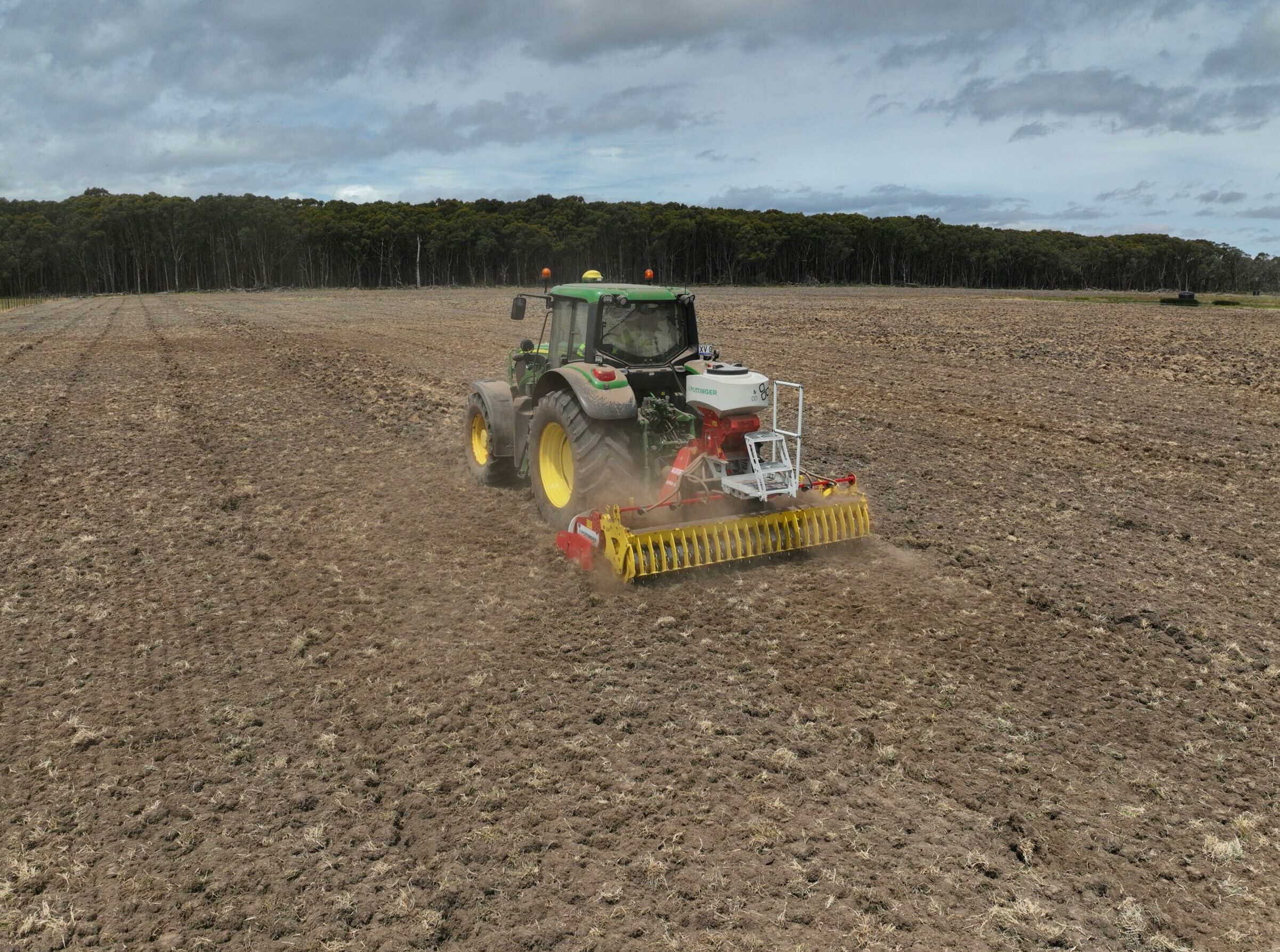Autumn Weed Control in New Sown Pastures
The success of your Autumn pasture program, will be greatly increased by sowing into a well prepared, weed free seedbed. Weeds compete vigorously for nutrients, moisture, light and space and are faster growing than ryegrass/clover and compromise persistence of new pasture.
Spraying out germinating weeds with a knockdown herbicide ensures you are ready to plant into weed/grass free paddocks. Check your pastures before you spray them out to identify which weeds are present (consult your Webber and Chivell Agronomist for advice on weed identification and chemical options). Grass weeds must be controlled prior to sowing the pasture.
Knockdown herbicides
Spraying out germinating weeds with a knockdown herbicide such as Glyphosate and a spike such as Carfentrazone results in fast brownout of hard to control broadleaf weeds including marshmallow and stinging nettles, creating a weed/grass free paddock to plant into. A Glyphosate/Carfentrazone spray mix is a good option, with zero plantback or grazing withholds, speeding up the spraying out and re-sowing process.
However, Dicamba may also be needed to control broadleaf weeds such as dock, thistles and deadly nightshade, but will have a plantback period for ryegrass and clover. Consult your Webber and Chivell agronomist to check recommended intervals between herbicide treatment and sowing (Plant back period). Legumes species are sensitive to some residual herbicides and failure to observe plant back periods will result in establishment failure of sensitive species.
How do I get the best results when spraying Glyphosate?
- Ensure plants are actively growing, with fresh/green growth to ensure adequate chemical uptake (weeds >2 leaves)
- Make sure leaves are free of dust/dirt (ideally wait for rain), not covered with heavy dew/frost and plants are not under stress from dry conditions, waterlogging, high/low temperatures (ideal 12º – 25 ºC)
- Use clean water, rainwater is best!
- Results may not be apparent for 3-7 days (annual weeds) or 2-3 weeks (perennial weeds), or longer under cool/cloudy conditions
Adjuvants
Include Ammonium Sulphate as a water conditioner to improve plant uptake and compatibility in the tank between mixes. The inclusion of a surfactant/wetter may be beneficial (refer to chemical label recommendations). A surfactant such as Probuffer 700, can improve rainfastness, herbicide efficacy and aid in drift management.
Post-emergent selective herbicides
Broadleaf weed seedlings in establishing pastures can be controlled using selective herbicides with minimal impact on pasture species. A selective herbicide controls certain plants and not others.
There is often a narrow window of opportunity to spray due to weather, soil condition, weed/pasture growth stage. Monitoring is important, spraying sooner rather than later is integral to control weeds early.
Chemical options for newly established pastures include MCPA Diflufenican, MCPA 750, 2,4D Amine 625 and Ecopar. Selective additions such as Flumetsulam can also improve control of broadleaf weeds such as marshmallow and suppression to chickweed.
Guidelines for applying post-emergent herbicides:
- Control is most effective while the weeds are young/small (< 6 true leaves) and actively growing (4-8 weeks after sowing and prior to first full grazing)
- Ensure legume seedlings are at least at the third trifoliate leaf stage and Ryegrass is tillering
- Follow label recommendations for stock withholding periods
Insecticides
Include an insecticide in the knockdown spray, such as Le-Mat or Alphacypermethrin to control existing insect populations, also use treated seed such as Gaucho or Poncho plus to protect germinating seedlings.
Monitor new pastures for pests and identify and treat insect pests early, work with your Webber and Chivell Agronomist for best advice on pest control options. Plants are particularly susceptible to insect pests during emergence and seedling stage. New pastures should be checked weekly, in the first 3-4 weeks. It is well worth considering slug bait broadcast post sowing to control slugs, especially on direct drilled pastures, heavier soil types and higher trashload areas.
